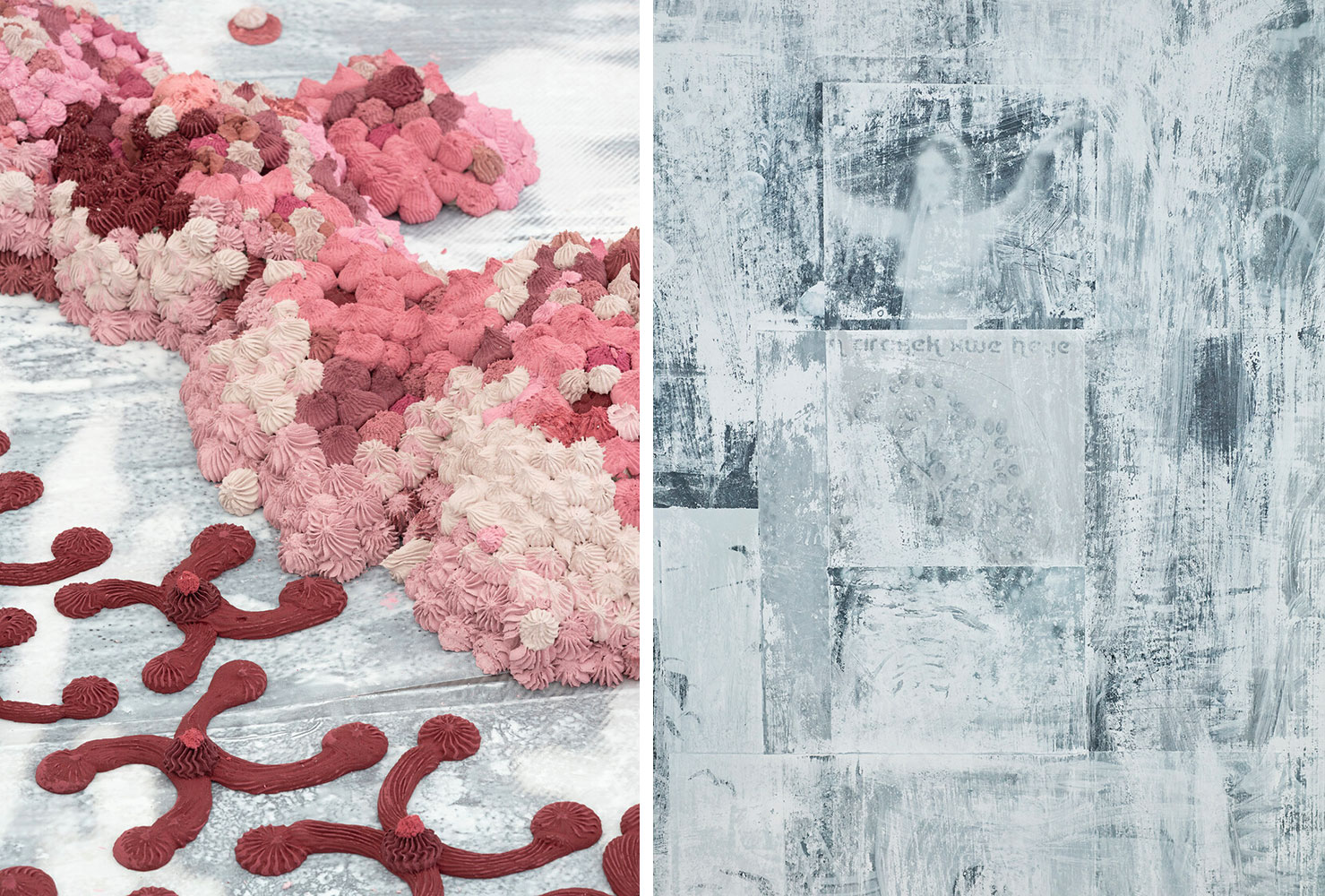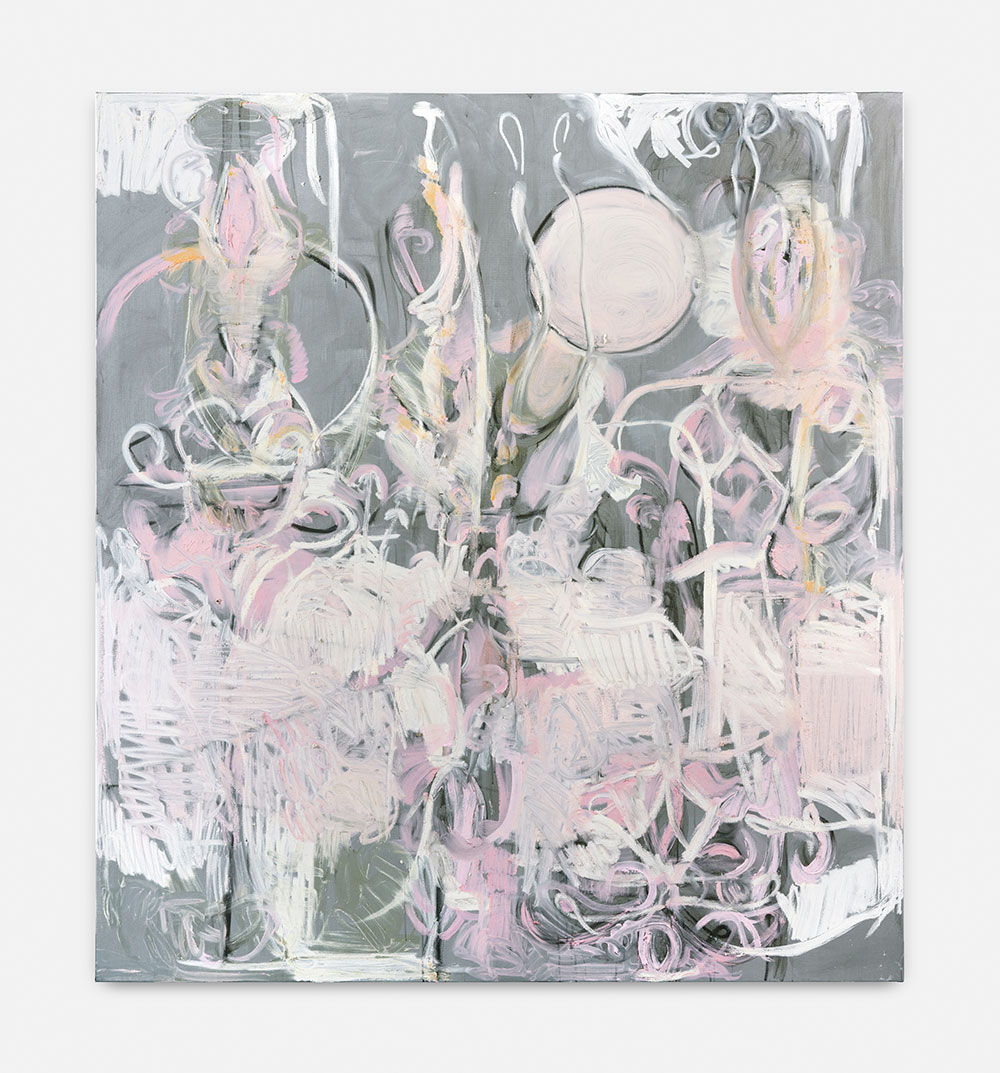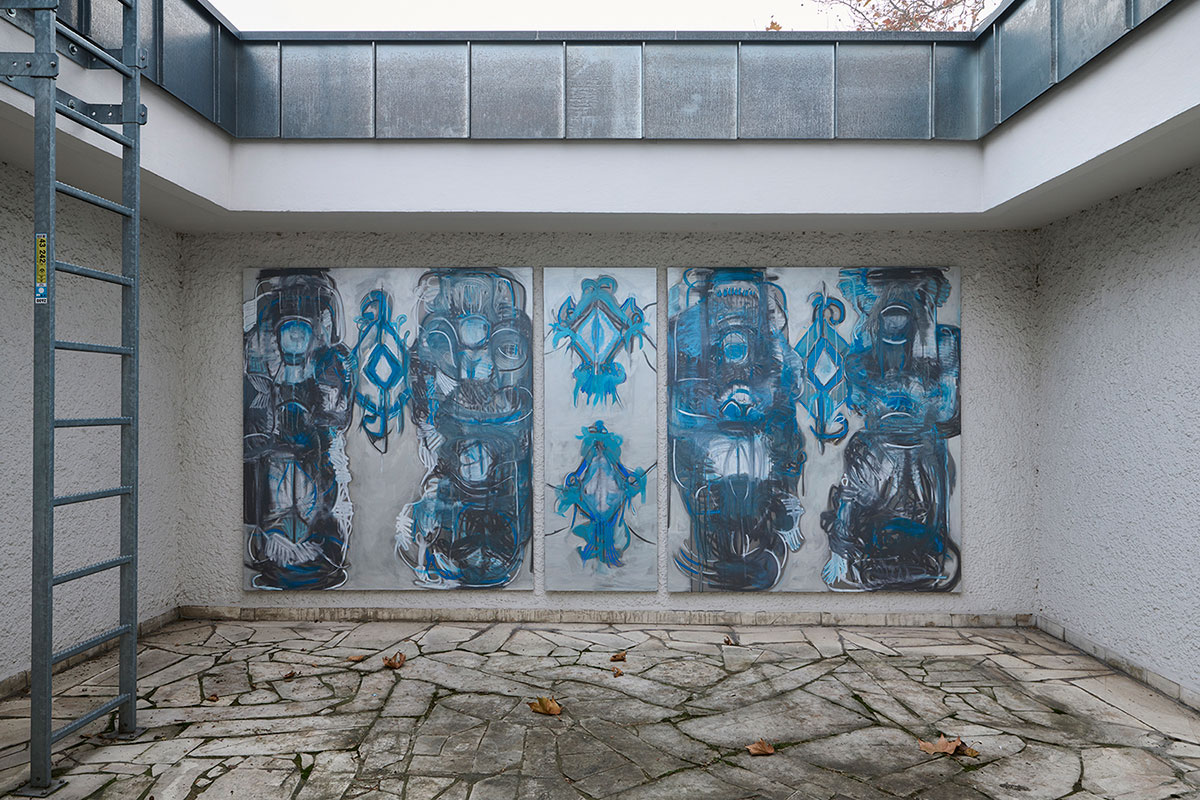PRESENTATION: Melike Kara-Emine’s Garden
 Melike Kara develops her painterly work alongside the writing of poetry and the production of sculptures, videos and other media. The experimental use of surfaces is a characteristic of her paintings, which are treated with thick oil pastels, for example, or the use of foreign materials such as textiles.
Melike Kara develops her painterly work alongside the writing of poetry and the production of sculptures, videos and other media. The experimental use of surfaces is a characteristic of her paintings, which are treated with thick oil pastels, for example, or the use of foreign materials such as textiles.
By Dimitris Lempesis
Photo: Kunst Halle Sankt Gallen Archive
In “Emine’s Garden”, her first institutional solo exhibition in Switzerland, Melike Kara continues her exploration of Kurdish traditions and questions of historicisation, tradition and community. She will realise site-specific works in a large-scale installation that will transform the spaces of the Kunst Halle Sankt Gallen into her own visual archive. The photographs stem from family members and Kara`s extended network of relationships, an archive that the artist is continuously compiling. Like a carpet, the photographs cover the floor of the Kunst Halle. Together with the paintings, in which Kara articulates her very own visual language, the installation reveals itself as a series of meditations on collective images. Through the collection and rearrangement of the material heritage, as well as the combination with gestural-abstract compositions, Kara`s personal gaze unfolds as an intimate narrative of her own family history and the visual culture of the Kurdish diaspora. The large-scale occupation of the space unfolds as an intimate and at the same time political gesture. Thus giving visibility to the disappearing population, whose culture is only maintained through informal channels and oral traditions, and to their history. Drawing on various weaving techniques and customs, Kara abstracts, layers, and interweaves her family history with Kurdish tapestry motifs from different regions and tribes in the exhibition. The ambiguity between abstraction and figuration, individual and collectivity, which is inherent in these tapestries, is constituted in the spatial arrangement but also as a particularity of her paintings into a visual testimony of a collective visual language and at the same time the artist`s very own. The starting point for her paintings is inspired by different Kurdish tapestry motifs from various regions and tribes. The ambiguity between abstraction and figuration is already at play in these carpets. From that point the painting weaves into the here and now and tells its own story. They appear to be two figures which are dissolving at the same time. As the artist says “My family, especially the older generation helped me to find a better communication to my Kurdish roots, but also travelling to the places where my family comes from or going to the religious pilgrim places gave me a very good possibility to connect. The rituals my grandmother taught me, which were so normal to her, opened up a different door – another dimension. I learned a lot from her, she was a door to my Kurdish heritage which drove me and my work to get a better idea of what it means to have Kurdish roots. When I started to dig deeper into my family history, I began collecting everything I could find. I was interested in what the bond is in a group of people as inhomogeneous as that of the Kurds. That is how building the archive started. My personal history is connected to a specific subgroup of the Kurdish population, but I was also interested in the Kurdish community as a whole with all the different tribes. At the same time, I wanted to learn more about history and about writers, stories, poets, and singers. They are from different regions and different networks, and they all come from different sources. There are personal family photos and pictures taken by family friends. There are photos I took myself and others taken by family members. I continue to expand the archive and am still taking photos and asking family members to do the same. Those images are accompanied by ones from other sources and regions, as well as found images etc. I was interested in collecting everything and finding the hidden beauty in them. The archive is something inherent and present in all my work, something that is alive and ever-changing. I am not afraid of these changes, it is an ongoing process and some part of me will always be searching for a better understanding of my Kurdish heritage”.
Photo Left: Melike Kara, Emine’s Garden, detail view, 2023, Photo: Kunst Halle Sankt Gallen, E. Sommer, Courtesy: Die Künstlerin und Jan Kaps, Köln Right: Melike Kara, bijar blossom, 2023, Photo: Mareike Tocha, Courtesy: Die Künstlerin und Jan Kaps, Köln
Info: Kunst Halle Sankt Gallen, Davidstrasse 40, St.Gallen, Switzerland, Duration: 8/7-24/9/2023, Days & Hours: Tue-Fri 10:00-18:00, Sat-sun 11:00-17:00, www.kunsthallesanktgallen.ch/


